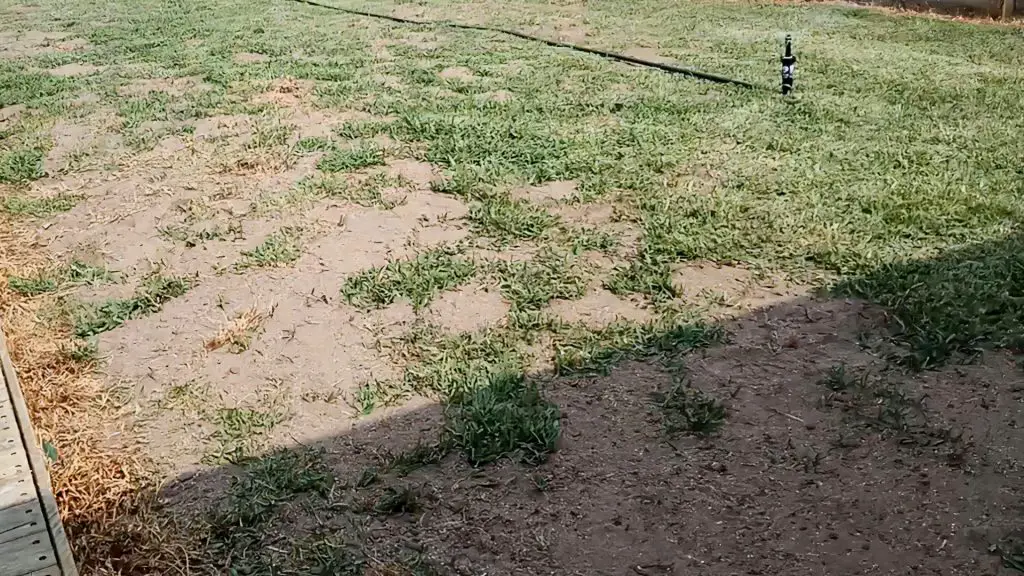Can I Use Compost for Top Dressing?
Yes, you can use compost for top dressing. Indeed, it is an excellent top dressing for your lawn and can be far better than commercially bought top dressings, especially if it is prepared correctly before use.
It is essential to ensure that the compost you use for top dressing is weed-free and that any larger pieces are removed. Below we will look at how you can prepare your compost for use as a top dressing so that your lawn can get the most nourishment possible.
Why Does Compost Make Good Top Dressing?
Compost is good for soil development, and top dressing is a soil development technique. It is an organic material that is full of nutrients, together with microbes, protozoa, beneficial fungi, and good nematodes, which feed and nourish the soil so that your lawn thrives.
Using compost with some sand mixed in can also help the lawn by allowing it to retain moisture, again important to maintain strong grass growth.
Adding a thin layer of compost for top dressing will make your lawn healthier and can prevent lawn diseases because of the nitrogen contained within the compost. It can also help with lawn care as the microorganisms contained in the compost will help break down thick thatch, allowing the lawn to breathe.
How to Apply Compost for Top Dressing to Your Lawn

You should apply compost as top dressing in small 1/4-inch layers. For sandy soils, you should increase the depth of the layer to around 1⁄2 inch. Make sure that you spread the materials out evenly with a rake and then work them into the top inch of your soil.[1]
If you have clay-type soil, you will need to mix around an inch of compost for top dressing into the top couple of inches of soil. Again spread it evenly with a rake and work it well into the soil.
After you have added the even layer of top dressing and worked it into the surface water the ground well.
You should be careful not to put too much top dressing on. Generally, a 1⁄4 to 1⁄2 inch in depth is enough going to an inch if the soil is clay-type and particularly compact. If you add too much top dressing, you will find that after watering it can sink.
The application rates for top dressing your lawn will largely depend on the type of soil you have. Usually, top dressing lawns should only be done once a year at the most, and every two years is probably nearer to where you should be in terms of application rates.
Can You Use Compost for Top Dressing Lawns?
Compost is one of the best top dressing solutions for your lawn and provides you with control over exactly what you are putting on your lawn as opposed to commercially bought solutions.
Compost and top dressing are terms that are often used interchangeably in terms of adding them to your lawn. Top dressing is the application of compost to the lawn in a layer approximately 10-15mm thick.
Compost, in general, is an organic product and a soil conditioner. It is made from a variety of ingredients including green waste, manure, straw, grass clippings, and shredded paper. Compost has a rich organic structure, is very dark in color, smells earthy, and is friable to the touch.
If using compost it should be screened to remove larger particles, but it will still contain lots of ‘fines’ which are particles less than 2mm in diameter.
Using compost for top dressing is particularly beneficial for lawns as it contains millions of beneficial bacteria, fungi, protozoa, and often earthworms. These organisms help to break down organic and inorganic materials, releasing nutrients, improving soil structure, and making the soil more friable.
Commercial or Self-Made Compost for Top Dressing
You can purchase specifically formulated top dressing from most Garden Centers. These products do a great job, tending to be high in nutrients, peat-free, and often containing a high percentage of sand, which can help with drainage.
The advantage of purchasing a commercial top dressing is that it is ready to put down and should do the job you require of feeding and improving your lawn.
The disadvantage is that you are paying for something that, if you are a keen gardener, you can easily produce yourself.
With self-made compost for top dressing, you get to control exactly what is going on your lawn. You can determine what goes into the finished compost. You can adjust the pH levels to suit your soil and know that the nutrients are completely organic. You even can decide on whether you want any sand content.
The disadvantage is that you have to prepare the compost for it to act as top dressing. Filtering out the larger pieces and adding sand if you need it. This tends to be worthwhile though because of the control you have over the content and production, shaping the top dressing to the needs of your particular lawn.
Notes:
[1] University of Tennesse: Turfgrass Maintenance Topdressing
